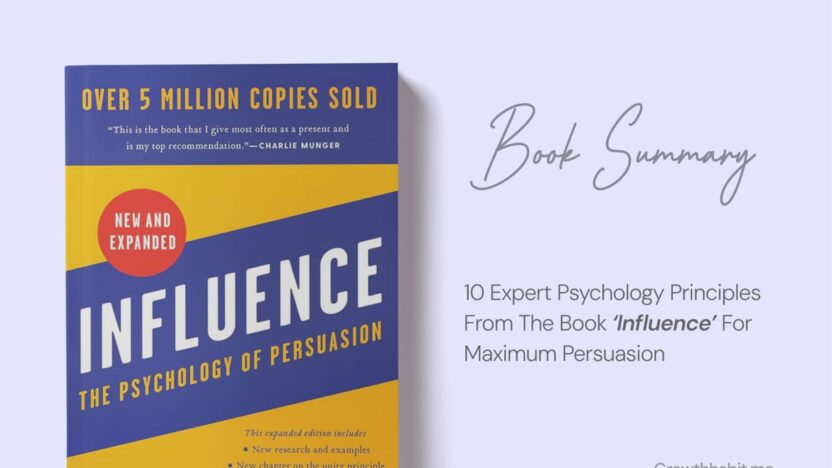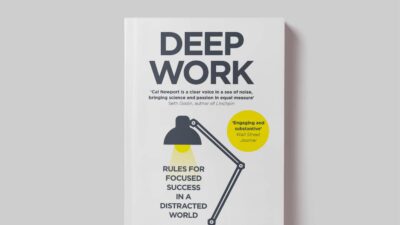Have you ever wondered why some people are so good at getting others to say “yes”? Or why certain TV commercials make you want to buy things right away? The answer lies in psychology and persuasion. Today, we’re going to explore 10 amazing principles that experts use to influence others. Don’t worry – I’ll explain everything in simple terms that anyone can understand!
- About This Book
- Introduction to Influence Psychology
- 1. The Power of Reciprocity
- 2. The Magic of Consistency and Commitment
- 3. The Social Proof Effect
- 4. The Authority Principle
- 5. The Scarcity Principle
- 6. The Power of Liking
- 7. The Unity Principle
- 8. The Contrast Principle
- 9. The Peak-End Rule
- 10. The Foot-in-the-Door Technique
- Conclusion: Using Influence Responsibly
About This Book
Let’s talk about one of the most important books ever written about persuasion: “Influence: The Psychology of Persuasion” by Robert Cialdini. Dr. Cialdini spent over 35 years studying how people make decisions and why they say “yes.” He worked as a car salesman, fundraiser, and advertiser to learn these secrets firsthand!
The book was first published in 1984, but its ideas are still super important today. In fact, big companies like Google, Microsoft, and Amazon use these principles! Even though Dr. Cialdini wrote this book for grown-ups, we’re going to break down his amazing ideas in a way that’s easy and fun to understand.
Introduction to Influence Psychology
Before we dive into the principles, let’s understand what influence means. When we influence someone, we help them change their thoughts or actions. It’s like having a superpower, but one that comes with great responsibility! The ideas we’ll talk about come from famous psychology research and real-life studies about how people make decisions.
1. The Power of Reciprocity
Imagine your neighbor brings you cookies. What do you feel like doing? Most people want to do something nice back! This is called reciprocity, and it’s one of the strongest ways to influence others.
When someone does something nice for us, our brain tells us we should return the favor. It’s like playing catch – when someone throws you a ball, you naturally want to throw it back. Companies use this all the time. Have you ever gotten a free sample at the grocery store? That’s reciprocity in action!
How to Use Reciprocity:
- Give genuine, unexpected gifts
- Offer helpful advice before asking for anything
- Share your knowledge freely
- Do small favors without being asked
2. The Magic of Consistency and Commitment
Did you know that once we say we’ll do something, we really want to stick to it? This is called commitment, and our brain loves to be consistent with what we say.
Think about when you tell your friends you’ll finish your homework before playing video games. Even if you really want to play, you feel like you should keep your promise. This is why writing down goals works so well – we commit to them!
Ways Commitment Works:
- Start with small requests that lead to bigger ones
- Ask people to write down their goals
- Get public commitments instead of private ones
- Remind people of their past promises
3. The Social Proof Effect
Have you noticed how you feel better about trying a new restaurant when it’s full of people? That’s social proof working! We look at what others do to decide what’s right or good.
This is why YouTube videos with lots of views seem more interesting, or why we might want the same shoes everyone at school is wearing. Our brains think: “If lots of people like it, it must be good!”
Examples of Social Proof:
- Testimonials from other kids your age
- Showing how many people have already joined
- Stories about what others chose to do
- Pictures of happy customers
4. The Authority Principle
When a doctor tells you to take medicine, you probably listen. That’s because doctors are authority figures – experts we trust to know what’s right. This principle shows how we tend to follow people who know a lot about something.
Think about your favorite teacher. You listen to them because they’re an expert in their subject. Companies use this by having doctors recommend their products or showing experts in their ads.
How Authority Works:
- Sharing expert opinions
- Using professional titles
- Showing certificates and awards
- Wearing uniforms or professional clothes
5. The Scarcity Principle
Have you ever wanted something more because it was about to run out? That’s the scarcity principle! When things are hard to get, we want them more.
It’s like when your favorite snack is almost gone at the store – suddenly you really want to buy it! Or when a game says “Limited time only!” we feel we have to play it now.
Using Scarcity:
- Limited time offers
- Exclusive membership deals
- “Only 5 left!” messages
- Special edition items
6. The Power of Liking
We’re more likely to say “yes” to people we like. This might seem obvious, but the science behind liking is really interesting! We tend to like people who:
- Are similar to us
- Give us compliments
- Work with us toward common goals
- Make us laugh
This is why companies use friendly faces in their ads and why salespeople try to find things in common with customers.
Building Likability:
- Find shared interests
- Be genuinely helpful
- Show real interest in others
- Use friendly body language
7. The Unity Principle
Unity is about feeling like we belong to the same group. When we feel connected to others, we’re more likely to agree with them. This could be because we:
- Come from the same place
- Like the same sports team
- Go to the same school
- Share the same hobbies
It’s why school spirit works so well – we feel connected to our classmates and want to support our school!
Creating Unity:
- Highlight shared experiences
- Create team identities
- Use “we” language
- Share personal stories
8. The Contrast Principle
The contrast principle shows how we compare things to what we saw just before. If you lift a light backpack after carrying a heavy one, it feels super light!
This works in stores too. If you see a $100 toy first, a $30 toy seems cheap. But if you see the $30 toy first, it might seem expensive!
Using Contrast:
- Show higher prices first
- Compare old problems with new solutions
- Point out differences between choices
- Use before-and-after examples
9. The Peak-End Rule
People remember experiences based on two main things:
- The highest point (peak)
- How it ended
This psychology principle explains why a fun day can feel ruined by one bad moment, or why we remember vacations by their best parts and last day.
Applying the Peak-End Rule:
- Create amazing high points
- End things on a positive note
- Fix problems quickly
- Save good news for the end
10. The Foot-in-the-Door Technique
This funny-named principle is simple but powerful. Start with a tiny request, and people are more likely to say yes to bigger ones later. It’s like getting your foot in a door to keep it from closing!
If you first ask someone to answer one quick question, they’re more likely to help with a longer survey later. This works because of our need to be consistent, which we learned about earlier!
Using Foot-in-the-Door:
- Start with small, easy requests
- Build up to bigger asks slowly
- Keep early commitments simple
- Thank people for small yeses
Conclusion: Using Influence Responsibly
Now you know 10 powerful ways to influence others! But remember – with great power comes great responsibility. These psychology principles should be used to help people and make positive changes, not to trick anyone.
The best influence happens when:
- You’re honest about what you want
- You really want to help others
- You give people choice
- You use these principles ethically
Key Takeaways:
Understanding these psychology principles can help you:
- Be more persuasive when asking for what you need
- Make better decisions about your own choices
- Understand why people act the way they do
- Help others in positive ways
Remember, influence isn’t about forcing people to do things. It’s about understanding how people think and making it easier for them to say yes to good ideas!
Would you like to learn more about how your brain makes decisions? Check out our other articles about psychology and human behavior!
This article was written to help everyone understand complex psychology ideas in simple terms. For more information, check trusted psychology sources and research papers.


